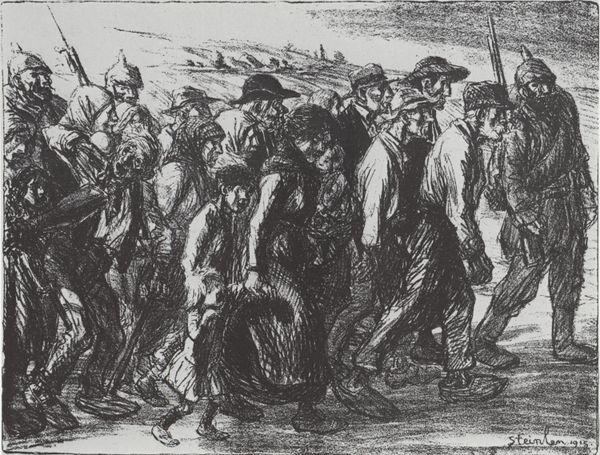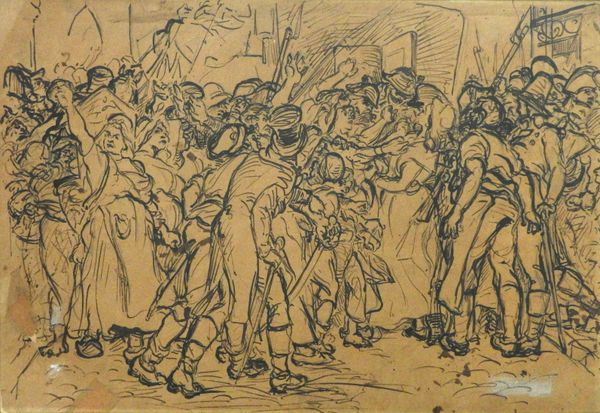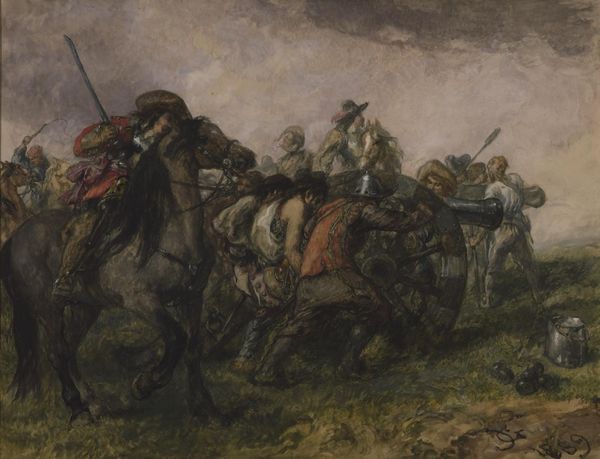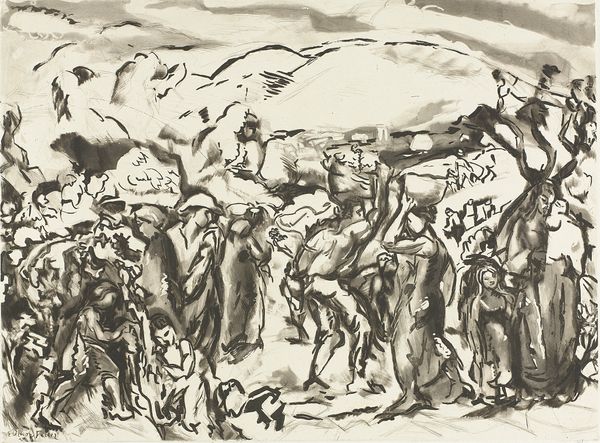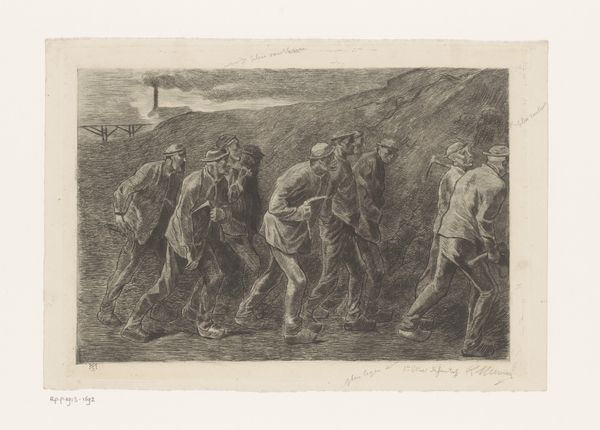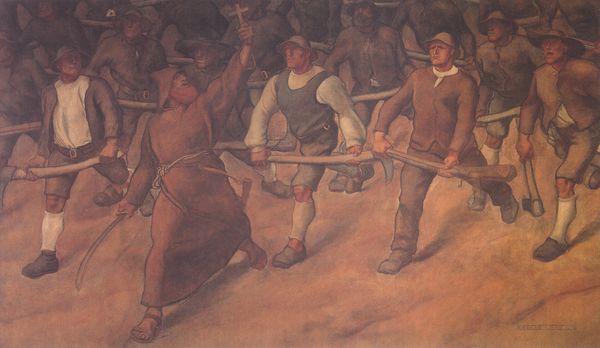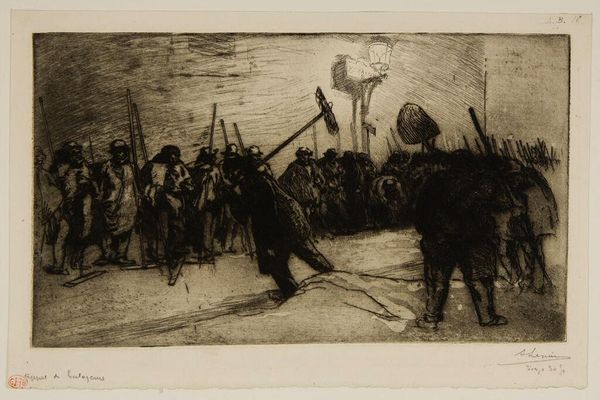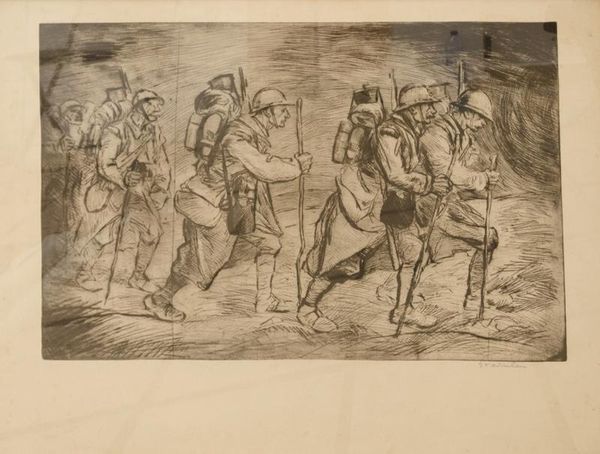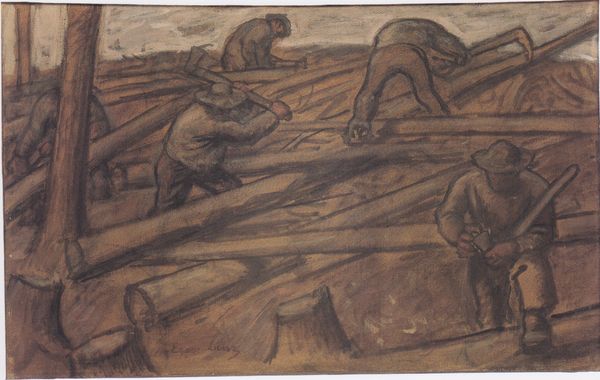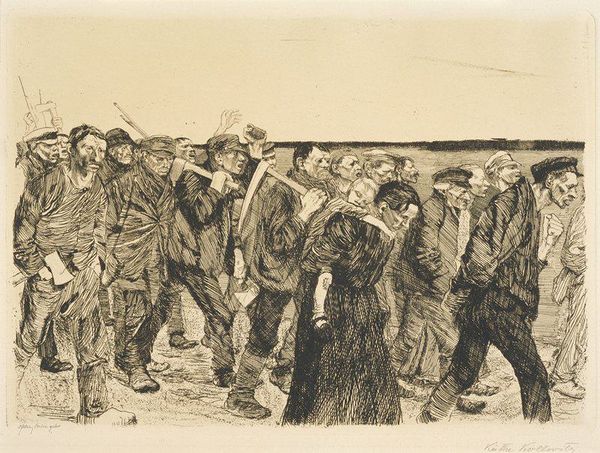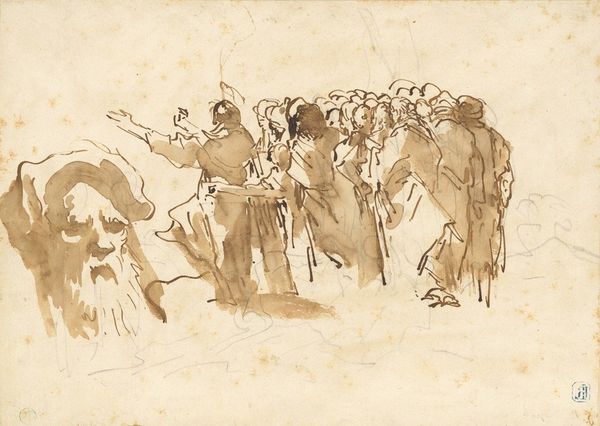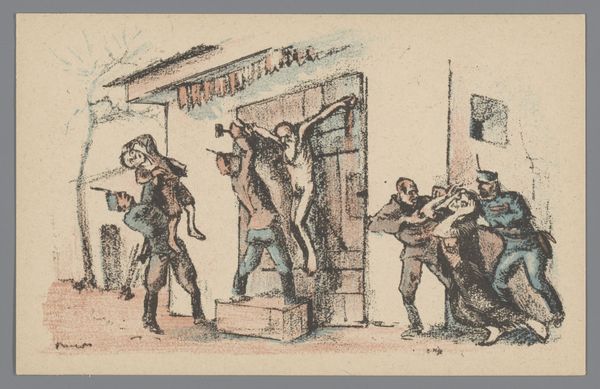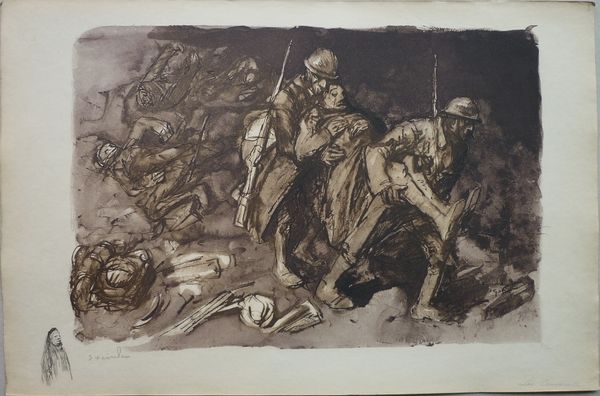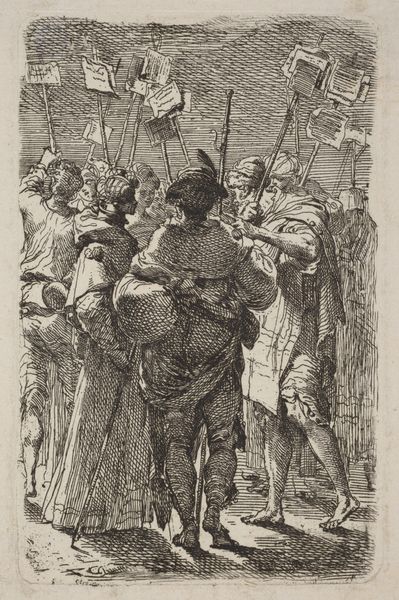
drawing, charcoal
#
drawing
#
landscape
#
charcoal drawing
#
figuration
#
pastel chalk drawing
#
expressionism
#
charcoal
#
history-painting
#
watercolor
Dimensions: 112 x 70 cm
Copyright: Public domain
Curator: Albin Egger-Lienz created this work, “Haspinger 1809,” in 1908 using charcoal and pastel chalk. What stands out to you? Editor: A definite feeling of upward struggle. The figures straining forward, the earth rising beneath their feet. There’s also this overriding sense of grim determination, like they’re marching towards something inevitable, and probably unpleasant. Curator: Yes, considering the piece through the lens of socio-political dynamics offers a great insight. It depicts Andreas Hofer's Tyrolean Rebellion against Napoleonic rule, with the clergyman Joachim Haspinger playing a pivotal role. Think about the context: Early 20th-century Austria grappling with identity and nationalism. Egger-Lienz is engaging with this complex historical narrative. Editor: Absolutely. Haspinger's presence—holding the cross aloft—isn't just about religious symbolism. It’s about legitimizing the rebellion, framing it as a righteous cause. How do you see the choice of materials playing into this narrative? The grainy texture of the charcoal? Curator: The texture lends a weight and grittiness. The loose application speaks to the rawness and the harsh realities of war, while the pastel adds a ghostliness to the scene, as if the participants and events were both tangible and vanishing, in a fragile moment of crisis and conflict. We need to remember that Hofer was eventually executed, transforming him into a martyr. Egger-Lienz knew well what he was evoking. Editor: That definitely changes my perception of it. I initially focused on the somber, almost resigned expressions of the men. Seeing it as a constructed historical statement with calculated messaging is critical. Curator: Indeed. The piece acts as both historical record and a carefully crafted work that examines the nuances of resistance and sacrifice. It questions whose stories get told and how those stories solidify into collective memories. Editor: I'll carry that sense of critical historical engagement with me. I hadn’t fully appreciated the layers of meaning interwoven with the visible representation, but understanding the social context reframes the visual reading.
Comments
No comments
Be the first to comment and join the conversation on the ultimate creative platform.
